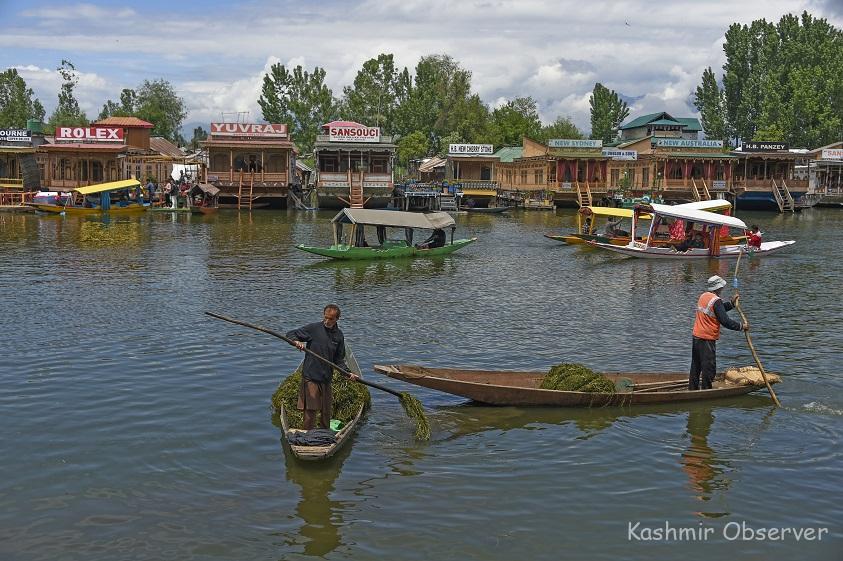
Despite decades of government efforts to protect Dal Lake, these measures seem insufficient to bring about a significant improvement in the condition of the waterbody. And as the latest report by Jammu and Kashmir Pollution Control Committee (PCC) has underlined, government itself is responsible for this. The report reveals that water from about 910 houseboats is still being discharged into Dal Lake without treatment. The report was submitted after the National Green Tribunal had asked for a report on the status of monitoring stations and water quality in the lake, along with the state of sewage management in Srinagar, particularly around the lake. The report, as a result, covered the sewage disposal practices of houseboats, the sewage treatment mechanisms in place, and the monitoring of sewage treatment plants (STPs).
This is a sad state of affairs for the lake, a mascot of Kashmir’s timeless beauty and a magnet for the tourists to the state from all over the world. The has been the focus of an intense recovery effort over the past three decades. The local and the central governments have followed twin strategies of conservation and rehabilitation to rejuvenate the lake’s ecosystem and to rid it of the encroachment respectively. Though conservation effort has somehow pulled along, it has largely made a symptomatic difference to the condition of the lake. And the rehabilitation plan which includes removing encroachment and resettling the people living inside the Dal hasn’t made much of a headway, even though the plan dates back to 1987. Around 50,000 people live on some islands within the lake and around 750 houseboats are moored in its waters.
As the PCC makes it clear, the two and a half decades of the cleanup plan hasn’t made a fundamental difference. The factors that menace the ecosystem of the lake haven’t gone away. The lake’s once large green belt has suffered an inexorable encroachment in parts. New residential colonies have come up on the lake’s west and the existing colonies have become more congested including the hamlets inside Dal, together with the massive tourism related infrastructure along its 15.5 kilometre long Boulevard . And a significant part of the sewage and the agricultural effluents from a predominant part of these settlements empty into the lake.
Last year, the discovery of the Alligator Gar fish in the Lake by the Jammu and Kashmir Lake Conservation and Management Authority (LCMA) further highlighted the existing polluted nature of the waterbody. This was the first time that this rare species of fish, which is native to North America, was found in Kashmir. The PCC report should serve as a wake-up call for the government to get its act together. The STP system needs urgent fixing and the other loopholes in the Dal conservation plan immediate plugging. Restoring Dal lake to its old glory is a tough pursuit, but it is nevertheless a pursuit we can’t afford to give up.
Follow this link to join our WhatsApp group: Join Now
Be Part of Quality Journalism |
Quality journalism takes a lot of time, money and hard work to produce and despite all the hardships we still do it. Our reporters and editors are working overtime in Kashmir and beyond to cover what you care about, break big stories, and expose injustices that can change lives. Today more people are reading Kashmir Observer than ever, but only a handful are paying while advertising revenues are falling fast. |
| ACT NOW |
| MONTHLY | Rs 100 | |
| YEARLY | Rs 1000 | |
| LIFETIME | Rs 10000 | |












